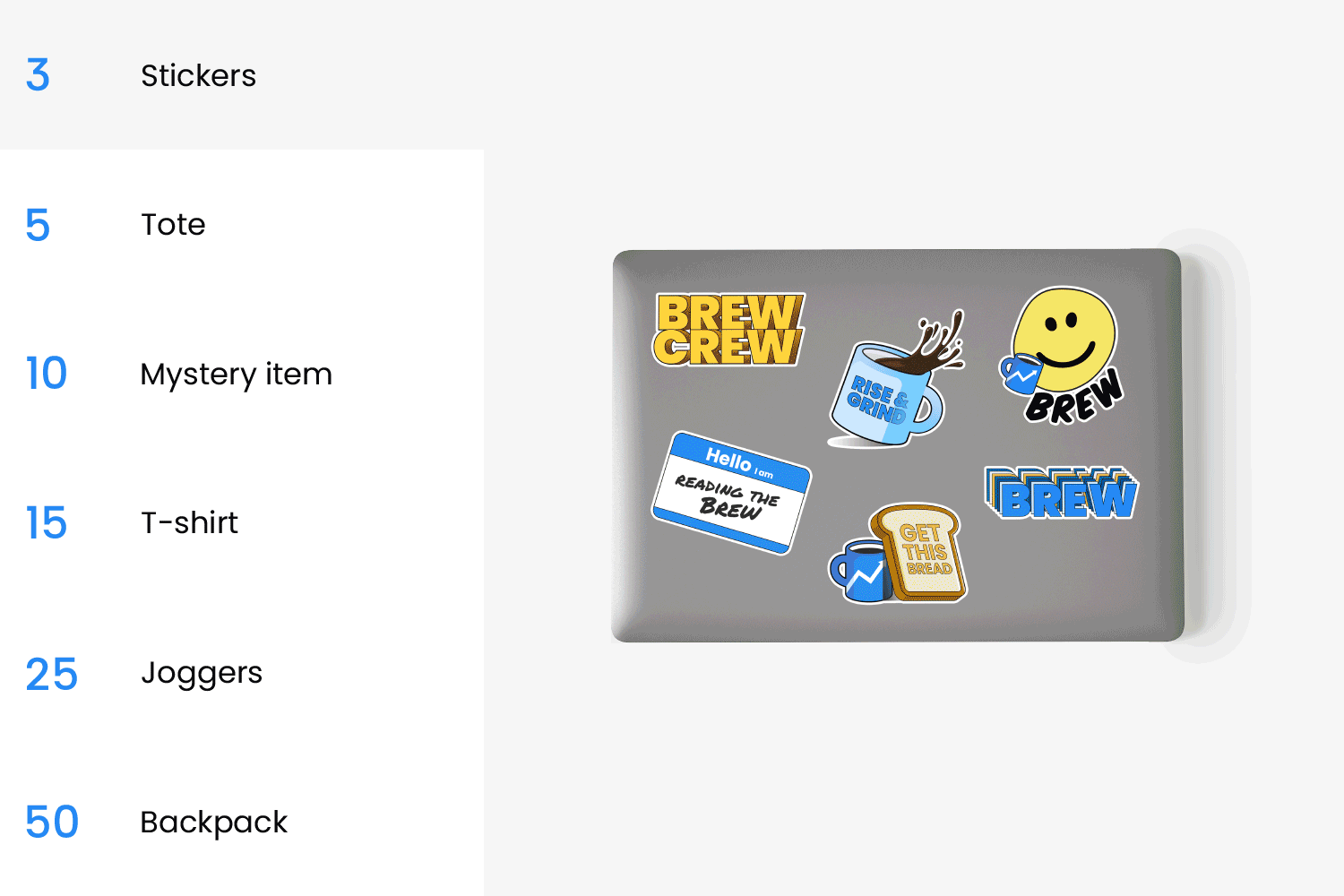|
It’s Monday. No matter your feelings on who took home Oscars last night, we can all agree that there should be some kind of award honoring Kim Kardashian’s decision to play two-dozen different characters in TV ads for Skims that aired ahead of the awards show.
In today’s edition:
—Alyssa Meyers, Ryan Barwick, Alex Vuocolo
|
|
Steven Branscombe/Getty Images
|
Outside of the US, volleyball is a pretty big deal.
In Brazil, for example, volleyball is generally considered to be the second-most-popular sport after soccer. It’s “just within the fabric of society,” Finn Taylor, CEO of Volleyball World, a joint organization partnership between volleyball’s international governing body and a private-equity firm, said. In Japan, where the manga Haikyu!! has breathed new life into the sport, national team players are icons on the level of NFL and NBA players in the US, he said.
Cassidy Lichtman, a former pro volleyball player who played on the US national team (as well as in Poland, Switzerland, Azerbaijan, France, and China), said there was at least some sort of fanbase everywhere she played outside of the US.
“We have a Thai player [Nootsara Tomkom] who plays in our league, and she is LeBron James in Thailand,” Lichtman, who’s now the director of volleyball for pro women’s league network Athletes Unlimited, told Marketing Brew. “She is a huge, huge deal.”
That’s not quite the case in the US. While the men’s and women’s national volleyball teams are some of the best in the world, and volleyball is one of the most popular high school sports for girls, it’s largely been inaccessible—both to play and to watch—at the professional level in the states.
That’s starting to change. Women’s leagues in particular have made significant strides in recent months, and though sponsors are still few and far between, there are signs women’s volleyball could soon be fertile ground for brands.
“It’s gone from us having to tell the whole story and convince people that volleyball is for real and there’s a huge audience out there, to the brand representatives being like, ‘I’ve been hearing about volleyball; tell me more about that,’” Lichtman said.
Continue reading here.—AM
|
|
PRESENTED BY AMERICAN EXPRESS BUSINESS
|
|
The enhanced American Express® Business Gold Card is designed to take your business further.
It’s packed with benefits, like 4X Membership Rewards® points that automatically adapt to your top 2 eligible spending categories every month, on up to $150k in purchases per year.
Plus, you can also earn up to $395 in annual statement credits on eligible business purchases at select shipping, food delivery, and retail subscription merchants.
And with flexible spending capacity that adapts to your business and access to 24/7 support from a business Card specialist, you can continue to run your business with confidence.
The Amex® Business Gold Card, now smarter and more flexible. That’s the powerful backing of American Express.
Enrollment required. Terms apply. Learn more here.
|
|
Francis Scialabba
|
Stop us if you’ve heard this one before—despite recent industry attempts to squash it, advertisers appear to still be spending millions advertising on clickbait sites.
A new report released this week from the ad-tech auditing firm Adalytics suggests that clickbait, often called made-for-advertising inventory (MFA), is continuing to litter the bidstream.
The report is largely anecdotal, using public, digital forensic skills along with an analysis of an Adalytics client, to paint a picture of programmatic waste it observed in January.
- In one instance, H&R Block served more than 2,100 impressions to one user on an MFA site within an hour.
- In another, Adalytics found that Comcast paid an effective CPM of $2,628 to reach one consumer on an MFA site.
- Adalytics was asked to conduct an ad-spend analysis on behalf of a Fortune 500 company and found that in the second half of 2023, it had spent at least $10 million on MFA websites, despite recent efforts to minimize its MFA exposure. (The report does not detail how much this amount represents as a percentage of that company’s total ad spend.)
“We work with reputable and trusted partners in the marketing ecosystem and have implemented frequency caps across every single campaign and line item. Our agency partners are investigating the error that appears to have occurred with one of our DSP partners and are making necessary adjustments,” Alice Colarusso, VP of growth marketing and engagement at H&R Block, wrote in an email.
Comcast did not respond to Marketing Brew’s request for comment.
The issue continues to be widespread, according to Adalytics’s research. The report identifies major holding companies, DSPs, SSPs, and big-name advertisers, as all having bought, sold, or bid on MFA inventory. The report does not identify whether the MFA inventory was intentionally sought out or not, and it’s possible that some advertisers do want to appear on these sites.
Keep reading here.—RB
|
|
Scott Olson/Getty Images
|
The price-raising bonanza of the pandemic-era economy is winding down, and some major retailers are sinking their profits into advertising to recover sales volume.
“Companies are running out of pricing power,” Samuel Rines, economist and managing director of Corbu, told Retail Brew. “Across the board, management teams have said we aren’t going back to the algorithm, which is 2%, maybe 3% price increases.”
While admittedly raising margins for retailers, price increases also pushed many consumers to aggressively trade down to cheaper options, Rines explained. Now, companies are fighting to get those customers back, and advertising is one way to do it.
Rines called the effort “the battle for volume.”
Fighting back: Among those doing battle is Lowe’s. Bill Boltz, EVP of merchandising at the home improvement retailer, told investors last week that savings from cost-cutting efforts are being reinvested into “marketing and merchandising strategies to drive traffic and sales.”
He also noted that Lowe’s is experimenting with a new approach to advertising, with the launch of a loyalty program and an “enhanced marketing strategy” this spring.
“This season, we are taking a more sophisticated, tech-enabled advertising approach, and we will be featuring traffic-driving events that will motivate homeowners to get started on their spring projects at Lowe’s,” he said.
Lowe’s is targeting DIY customers in particular, as they tend to be more sensitive to price fluctuations and more hesitant to shell out for big-ticket discretionary purchases.
Another brand pumping serious money into advertising is Unilever. Out of a 2% gross margin in 2023, the company reinvested 1.3% in marketing for its top 30 brands.
“That investment in our brands focused behind strong superior innovations is a fundamental reason behind the acceleration of volume growth in the second half,” CFO Fernando Fernandez said during an earnings call last month.
Read more on Retail Brew.—AV
|
|
TOGETHER WITH CUSTOMER.IO
|
|
Time to freshen up. Tidying up your messaging strategy? Get data-driven insights from 2023—and the trends already taking over 2024—in Customer.io’s latest The State of Messaging Report. Explore how their multi-product customer engagement platform helps marketing teams create data-driven campaigns that reach audiences at the right time. Read on here.
|
|
Level up your career with these resources from our sponsors!
- Reach your target audience when (and where) they feel most receptive
|
|
Morning Brew
There are a lot of bad marketing tips out there. These aren’t those.
Keep it real: Adweek broke down Mekanism’s “The Menoclause,” a set of guidelines designed to create a more menopause-friendly workplace, and why it is pushing others in the industry to adopt similar policies.
Girls just wanna have fun: Here’s a rundown of how some networks and agencies celebrated International Women’s Day this year.
Post-op: Ad Age broke down AI challenges agencies and brands have run into, plus tips on how to avoid mistakes.
Victory with video: Did you know consumers retain 95% of a message when they see it in video form? Learn how to capitalize on your video content with Brightcove’s Video Moves the Customer Journey guide.* *A message from our sponsor.
|
|
Francis Scialabba
|
Executive moves across the industry.
-
Tubi hired Jeff Lucas, an NBCU ad sales alum, as its chief revenue officer.
-
SmileDirectClub’s former creative director, Vince Skyers, joined Nashville agency MP&F as its first ECD.
-
VaynerMedia hired Dentsu exec Mike Feldman to serve as senior VP, global head of retail media.
|
|
ADVERTISE
//
CAREERS
//
SHOP
//
FAQ
Update your email preferences or unsubscribe
here.
View our privacy policy
here.
Copyright ©
2024
Morning Brew. All rights reserved.
22 W 19th St, 4th Floor, New York, NY 10011
|
|











